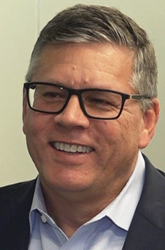
Issues & Answers Special Advertising Section
March 2020
Issues & Answers: Successful Environment

Jon Peeples
Vice President of Environmental
Philadelphia Insurance Companies

“When it comes to environmental, PHLY is very accessible being that we have 24 underwriters throughout six different offices in the country.”
At a Glance
- Key underwriting staff that averages more than 20 years E&S experience.
- Best’s Financial Strength Rating A++ (superior) and approved in 50 states.
- Provides a creative approach to complex environmental risks.
What are the emerging environmental risks?
We’re tracking one thing right now that is prevalent. It is called ethylene oxide, also known as EtO. It’s a gas that’s used for sterilizing medical equipment. The concern is that it’s unregulated, and has been found to be carcinogenic by the [U.S. Environmental Protection Agency]. This gas is both colorless and odorless, and it’s getting into air emissions. If you breathe it in over a long period of time, you can get cancer such as leukemia and lymphoma. There are only two facilities in America that manufacture this gas and both are being studied for a cancer risk to the surrounding population from air emissions. That is a controllable concern. The issue we face as an underwriter is that we write a lot of medical institutions that are using this type of process to sterilize their medical equipment. The major concern that we have is if it does get regulated, how does that impact hospitals for air emissions as well as possibly their workers?
What should insurance agents know about these risks?
They need to know that if they do have operations that have medical offices, medical emergency rooms, hospitals, and such, there should be some concerns about indoor air quality. It may not be just an environmental issue, but a workers’ compensation issue since it can cause cancer. That means OSHA, the Occupational Safety and Health Administration, will be involved as well as the EPA. From an environmental standpoint, it may impact the agents that are working on the two facilities. We know right now that both facilities that manufacture this gas have pollution legal liability policies. Considering that we may be seeing class action lawsuits coming back, those agents should be very concerned about that for their insureds.
Where do you see the environmental market headed?
It’s stabilizing. We’ve had a lot of new entrants over the last few years. They’ve kept our market somewhat soft, but as the casualty market is hardening, it’s going to influence environmental. One area that will have an impact is that a lot of the environmental coverages we offer are optional and not required. As property and casualty rates go up, less money attributed to optional coverages could dip. That dip may impact some of our newer players and possibly harden our market a little bit.
View the full spread as it appears in Best's Review print edition.

